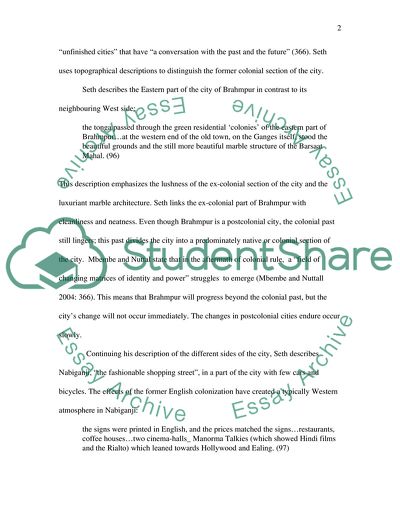Cite this document
(Seths Novel, A Suitable Boy Essay Example | Topics and Well Written Essays - 4250 words, n.d.)
Seths Novel, A Suitable Boy Essay Example | Topics and Well Written Essays - 4250 words. Retrieved from https://studentshare.org/literature/1704112-discuss-the-ways-in-which-literature-or-film-imagines-the-city-with-reference-to-at-least-two-texts
Seths Novel, A Suitable Boy Essay Example | Topics and Well Written Essays - 4250 words. Retrieved from https://studentshare.org/literature/1704112-discuss-the-ways-in-which-literature-or-film-imagines-the-city-with-reference-to-at-least-two-texts
(Seths Novel, A Suitable Boy Essay Example | Topics and Well Written Essays - 4250 Words)
Seths Novel, A Suitable Boy Essay Example | Topics and Well Written Essays - 4250 Words. https://studentshare.org/literature/1704112-discuss-the-ways-in-which-literature-or-film-imagines-the-city-with-reference-to-at-least-two-texts.
Seths Novel, A Suitable Boy Essay Example | Topics and Well Written Essays - 4250 Words. https://studentshare.org/literature/1704112-discuss-the-ways-in-which-literature-or-film-imagines-the-city-with-reference-to-at-least-two-texts.
“Seths Novel, A Suitable Boy Essay Example | Topics and Well Written Essays - 4250 Words”, n.d. https://studentshare.org/literature/1704112-discuss-the-ways-in-which-literature-or-film-imagines-the-city-with-reference-to-at-least-two-texts.


